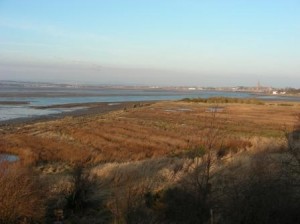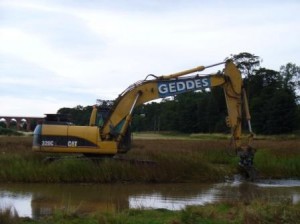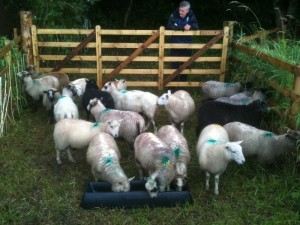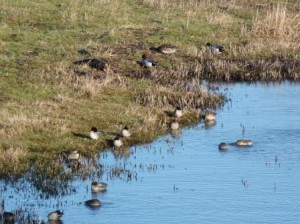Flying Flock touch down
You may not know this, but here at the Scottish Wildlife Trust we have our very own flock of Hebridean and Shetland sheep which move around our reserves across Scotland to help with conservation grazing, improving sites for wildlife and nature.
Dubbed “the Flying Flock” due to their nomadic lifestyle, the sheep have recently returned to Montrose where they will help the Rangers manage vegetation in part of the reserve known as “Sa’ty Dyke”.
Historically, this area was used to evaporate sea water in the salt making process, however, the pools were long derelict and through natural succession gradually became covered in vegetation. This loss of open water degraded the site as a habitat for wading bird species like redshank, oystercatcher, knot, dunlin amongst many others.

During August and September 2008, a contractor excavated the vegetation with a mechanical digger, opening up shallow scrapes for waders whilst creating deeper areas designed to attract dabbling ducks like mallard, teal and wigeon.

In 2010 the site had started to become overgrown once again, so we called for some baaack-up (sorry, I couldn’t resist it!) in the form of the Flying Flock.

It was hoped that through grazing with the flock, we could:
- Enhance the salt marsh habitat and many transitional swamp communities.
- Maintain high biodiversity within the sward.
- Encourage wildfowl by providing a more palatable sward for grazing.
- Encourage wading birds by improving visibility for predator evasion.
- Encourage breeding waders through overall habitat improvements.
- Encourage waders to feed by muddying pool margins.
The sheep spent the latter part of the year grazing the site and keeping the grass nice and short and over the winter months we had a wide range of waders and wildfowl use the site for feeding and roosting.

Having done such a good job last year, the sheep have once again returned to the reserve where they will graze the site throughout the season.
The site is ideally located beside Montrose Basin Visitor Centre, so why not call in to see us and these whimsical woolly wonders in action?
Adam – Montrose Basin Ranger
Help protect Scotland’s wildlife
Our work to save Scotland’s wildlife is made possible thanks to the generosity of our members and supporters.
Join today from just £3 a month to help protect the species you love.
Preface
You may not know this, but here at the Scottish Wildlife Trust we have our very own flock of Hebridean and Shetland sheep which move around our reserves across Scotland …
